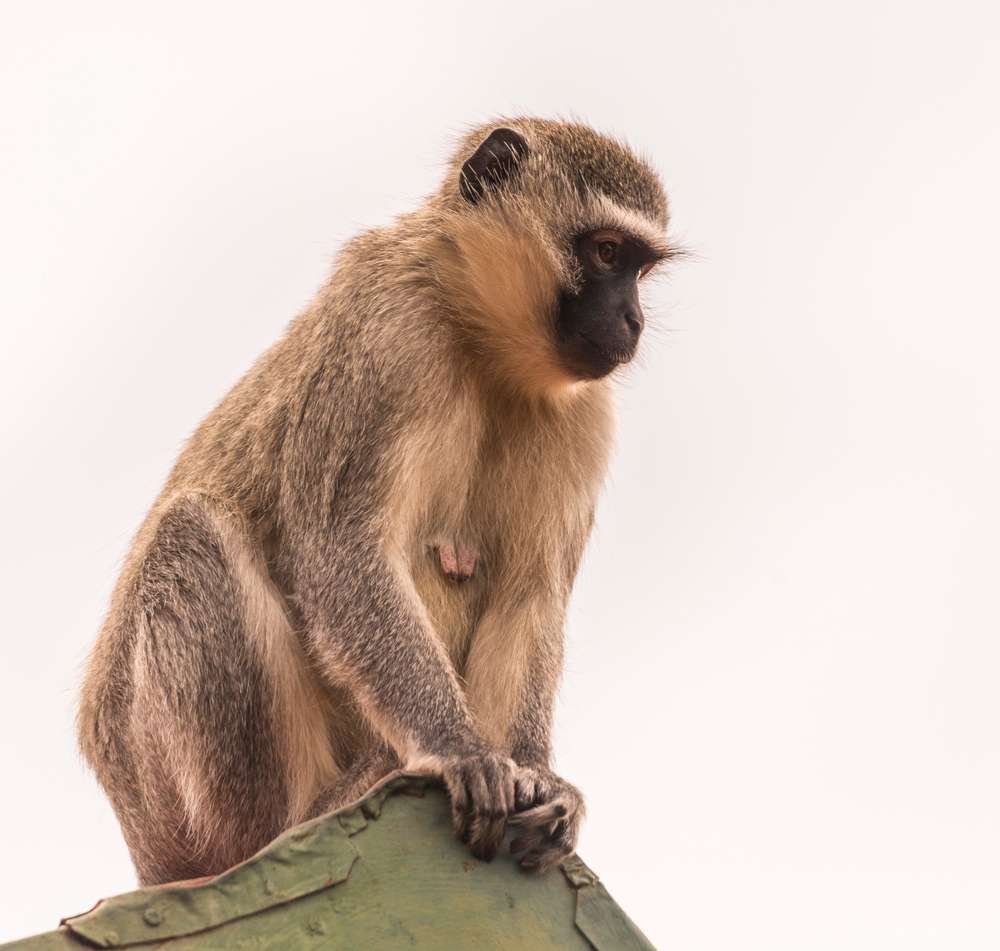Vervet Monkey
( kolwe or suntwe )
- Chlorocebus pygerythrus
- IUCN Status: Least Concern
- Trend: decreasing

- Kingdom: Animalia
- Phylum: Chordata
- Class: Mammalia
- Order: Primates
- Suborder: Haplorhini
- Family: Cercopithecidae
- Genus: Chlorocebus
Share:
General Information
The vervet monkey are mostly herbivorous monkeys and have black faces and grey body hair color. They are very common throughout a variety of woodland types. Moving in troops of about 20, they feed on young shoots, seeds and fruit but occasionally will eat insects and eggs.
Fun Facts!
Description
- Length: up to 60 cm
- Weight: up to 8kg
Ecology and Behaviour
In addition to behavioral research on natural populations, vervet monkeys serve as a nonhuman primate model for understanding genetic and social behaviors of humans. They have been noted for having human-like characteristics, such as hypertension, anxiety, and social and dependent alcohol use.
Vervet monkeys are known to be spiteful and have been observed to destroy a competitor’s food source rather than consume or steal it themselves. This spiteful act can benefit the monkey by allowing them to be less likely to be displaced by immigrating males.
Conservation
Its status according to the IUCN Red list is “least concern”.
Distribution and Habitat
The vervet monkey ranges throughout much of Southern and East Africa, being found from Ethiopia, Somalia and extreme southern South Sudan, to South Africa. Vervets live in social groups ranging from 10 to 70 individuals, with males moving to other groups at the time of sexual maturity. Studies done on vervet monkeys involve their communication and alarm calls, specifically in regard to kin and group recognition, and particular predator sightings. The vervet monkey eats a primarily herbivorous diet, living mostly on wild fruits, flowers, leaves, seeds, and seed pods. In agricultural areas, vervets become problem animals, as they raid bean, pea, young tobacco, vegetable, fruit, and grain crops. Animal foods of their diet include grasshoppers and termites. Raids of cattle egrets and weaver bird nests have been observed where the vervets eat the eggs and chicks. Typically, a female gives birth once a year, between September and February, after a gestation period around 165 days. Usually, only one infant is born at a time, though twins can occur rarely.
Interaction with humans
The monkeys are used for biomedical research. Many people living in close proximity to vervet colonies see them as pests, as they steal their food. Heavy fines in some areas discourage the killing of vervet monkeys.
No donation to this project yet.
| M | T | W | T | F | S | S |
|---|---|---|---|---|---|---|
| 1 | 2 | 3 | 4 | 5 | 6 | 7 |
| 8 | 9 | 10 | 11 | 12 | 13 | 14 |
| 15 | 16 | 17 | 18 | 19 | 20 | 21 |
| 22 | 23 | 24 | 25 | 26 | 27 | 28 |
| 29 | 30 | 31 | ||||


